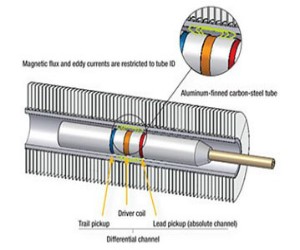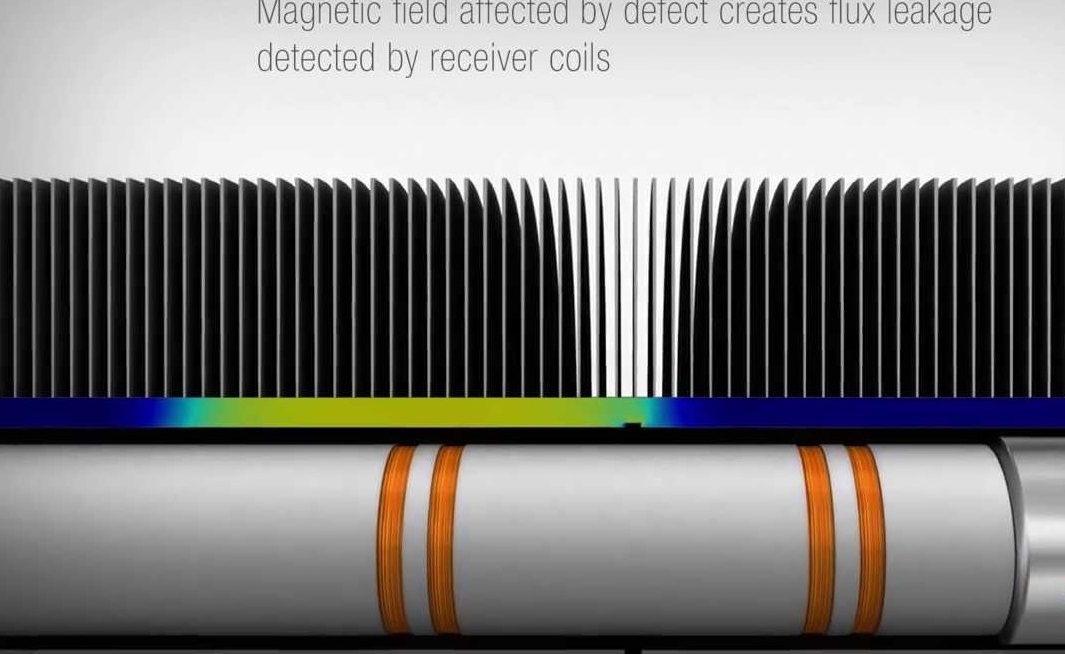- Home
- About Us
- Inspection Services
- Conventional Non-Destructive Testing
- Ultrasonic Weld Scan
- Ultrasonic Thickness Gauging
- Eddy Current Testing
- Radiography Testing
- Liquid Penetrant Testing
- View More
Non-destructive testing of tubing and surfaces relies on several techniques, which often depend on the application and the materials involved. By utilizing a single or combination of the following testing technologies, PWHT has all the capabilities to inspect your tubular equipment according to your national and international standards.

Magnetic flux leakage (MFL) is a tube-testing technique primarily designed for the rapid testing of ferromagnetic tubes with non-ferromagnetic fins wrapped around them, such as in air fin coolers. Two strong magnets generate a static magnetic field that saturates the tube wall (Fig. 1 ). When a flaw (pitting, wall loss, etc.) is located between the two magnets, the magnetic flux in the tube wall is disturbed and a small amount of flux will leak into the inner tube. This leakage of flux is detected by the coils placed between the magnets. The variation of the flux leakage induces current in the coils, thereby causing a signal output. This signal output can be used to provide information on any wall-thickness reduction in the tube. Magnetic flux leakage (MFL) is mainly applied in the inspection of air fin coolers, but it can also be used for inspecting bare tubes with diameters of one inch (2.5cm) and above.
Scheduled shutdowns present an opportunity for planned inspection programs which enable continued operation of critical plant equipment by minimizing unexpected failures. Prior to deciding which techniques are most suitable for your needs the following items should be considered: number of tubes to be inspected; cleanliness of tubes and time available for inspection.
